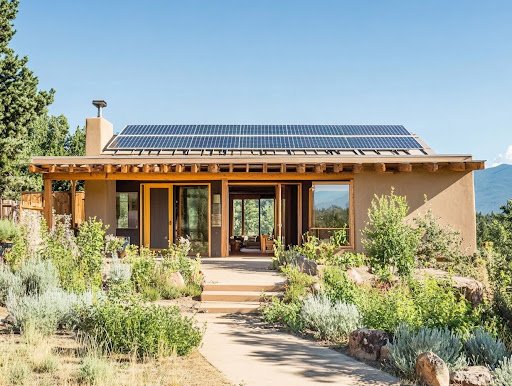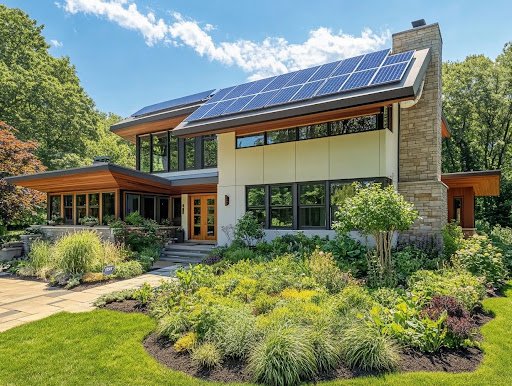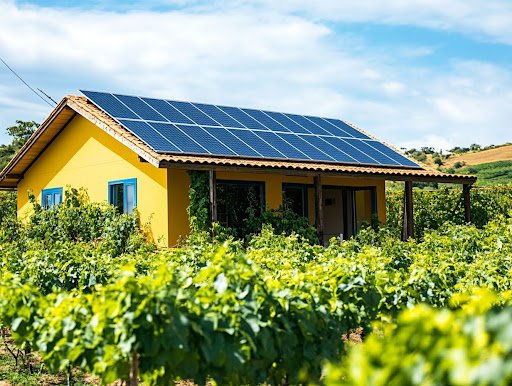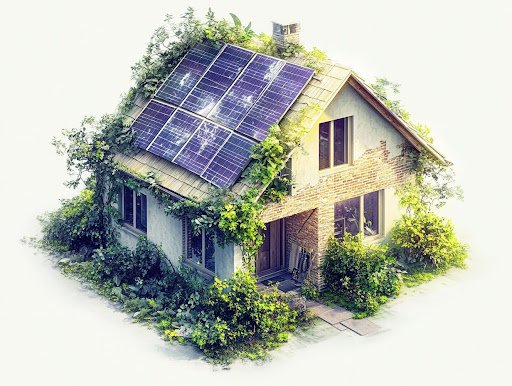Energy-Efficient Roof Replacement Options
- Trusted Roofing Professionals Brisbane
- Free Quotes Available
- Contact Us Now
In Brisbane, the subtropical climate, characterised by heat and humidity, has made energy-efficient roof replacement an essential consideration for homeowners. With escalating energy costs and an increasing focus on sustainability, selecting appropriate roofing materials can substantially affect energy expenses, indoor comfort, and overall property value. This article examines the significance of energy-efficient roofing, the range of available roofing materials, and the advantages of making this transition. We will provide a comprehensive guide to the selection process and the steps necessary for replacing your roof, including considerations for insulation materials and ventilation systems, ensuring that you make a well-informed decision for your home.
Key Takeaways:
- Investing in energy-efficient roof replacement can save you money on energy bills and reduce your carbon footprint in Brisbane, QLD.
- Metal, solar, and cool roofing are three excellent options for energy-efficient roof replacement in Brisbane, QLD.
- When choosing the right energy-efficient roofing option, consider your budget, roof condition, and local regulations and incentives in Brisbane, QLD.
Why is Energy-Efficient Roof Replacement Important in Brisbane, QLD?
The impact of installation and durable roofing types on energy performance cannot be understated.
In Brisbane, QLD, the significance of energy-efficient roof replacement is paramount, particularly given the region’s unique climate and weather conditions that influence the energy performance of residential properties.
Homeowners frequently aim to mitigate rising energy costs while increasing their property value through sustainable building practices and effective insulation materials. Upgrading to an energy-efficient roof allows properties to achieve enhanced heat retention, reduced heat loss, improved reflectivity, and better solar reflectance, thereby fostering a more environmentally sustainable living environment by the standards set forth by the National Construction Code (NCC).

Climate and Weather Conditions in Brisbane
Brisbane’s climate is characterised by hot and humid summers, necessitating that homeowners consider the impact of heat retention on their energy expenses and overall comfort within their residences.
During this season, average temperatures can exceed 30°C (86°F), accompanied by humidity levels that frequently surpass 70%. These conditions significantly affect the performance of roofing materials, making energy efficiency essential for maintaining a comfortable indoor environment with optimal ventilation.
In such climates, roofing systems that provide superior insulation can help regulate internal temperatures, thereby reducing dependence on air conditioning. Additionally, materials that reflect sunlight, such as metal or light-coloured roofing, can effectively minimise heat absorption, further enhancing indoor comfort.
Effective roofing installation processes are critical to ensuring that these materials perform at their best, ultimately reducing homeowners’ energy costs.
Energy Costs in Brisbane
The increasing energy costs in Brisbane are compelling homeowners to seek practical solutions that promote energy savings. One solution is to install energy-efficient roofing options, such as COLORBOND or ZINCALUME, thereby reducing reliance on air conditioning.
As fuel and utility bills continue to escalate, the significance of investing in roofing solutions that enhance energy efficiency cannot be overstated. Homeowners are now exploring various materials that function as practical barriers against external elements and reflect heat, thereby maintaining cooler indoor environments during the sweltering summer months.
Among the energy-efficient roofing options available, reflective metal roofs and cool roofing systems are emerging as particularly popular choices. These options can significantly reduce cooling costs and result in substantial long-term financial savings. Improving a home’s energy efficiency can positively impact property value and sustainability, making a well-informed roofing decision essential for proactive homeowners.
- Reflective Metal Roofs: Recognised for their durability and energy-saving properties, with notable options like COLORBOND and ZINCALUME.
- Cool Roofing Systems: Engineered to reflect more sunlight and absorb less heat.
- Green Roofs: Providing insulation, enhancing air quality, and increasing aesthetic appeal.
Types of Energy-Efficient Roofing Materials
When selecting roofing options, homeowners in Brisbane should carefully evaluate a range of energy-efficient roofing materials. These materials enhance the aesthetic appeal of properties and provide considerable advantages in terms of insulation, ventilation systems, and overall energy performance.
Metal Roofing
Metal roofing has emerged as a highly regarded option among Brisbane property owners, largely due to its exceptional durability, energy efficiency, and capacity to endure the region’s challenging climate conditions.
This material enhances a residence’s aesthetic appeal and provides long-lasting benefits, positioning it as a prudent investment for any homeowner.
One of the most noteworthy attributes of metal roofing is its remarkable lifespan, often extending beyond 50 years, in contrast to traditional roofing materials that may necessitate replacement in a considerably shorter timeframe.
Additionally, its low maintenance requirements enable homeowners to conserve both time and financial resources, as metal roofing necessitates minimal upkeep compared to other roofing types like asphalt shingles or concrete tiles.
The energy efficiency associated with this roofing type can contribute to reduced cooling costs, rendering it particularly suitable for warmer climates.
Furthermore, metal roofing has significant environmental advantages, as it is recyclable and frequently constructed from reclaimed materials. This establishes it as a sustainable choice in today’s eco-conscious market and reduces the overall climate impact.
By prioritising energy conservation and durability, homeowners are selecting a roofing solution that embodies both practicality and environmental stewardship.
Solar Roofing
Solar roofing incorporates photovoltaic technology to capture solar energy, making it an exceptionally efficient option for homeowners who want to reduce their energy costs while significantly contributing to environmental sustainability.
These roofing systems convert sunlight into usable electricity and offer substantial energy savings over time. By generating their power, homeowners can diminish their reliance on the electricity grid, resulting in lower utility bills and enhanced financial stability.
The environmental advantages are significant; by reducing the demand for fossil fuels, solar roofing plays a vital role in decreasing greenhouse gas emissions, which is essential in the fight against climate change.
In Brisbane’s warm climate, reflectivity and heat absorption are paramount. Solar roofs are engineered to deflect solar radiation, thus maintaining cooler indoor temperatures and reducing the need for air conditioning. This ultimately improves energy efficiency and offers substantial environmental benefits.
This interplay between technology and climate is crucial for understanding how solar roofing benefits individual homeowners and the wider community.

Cool Roofing
Cool roofing technologies are engineered to reflect more sunlight and absorb less heat, making them suitable for Brisbane’s warm climate. These innovations help maintain comfortable indoor temperatures while also reducing energy consumption and increasing overall energy savings.
Adopting these advanced roofing solutions can significantly mitigate the urban heat island effect, in which urban areas become substantially warmer than their rural counterparts due to human activities. Property owners can enhance their energy performance and overall building design by employing energy-efficient materials such as reflective tiles, elastomeric coatings, and green roofs.
- Reflective Tiles: Typically available in lighter colours, these materials reflect sunlight and minimise heat absorption.
- Elastomeric Coatings: These coatings are applied over existing roofs to create a seamless, waterproof layer that increases reflectivity.
- Green Roofs: These systems incorporate vegetation to provide natural insulation and help manage stormwater runoff.
Integrating these materials enhances insulation and contributes to lower cooling costs and a reduced carbon footprint, thereby addressing the increasing concerns associated with climate change.
Benefits of Energy-Efficient Roof Replacement
Replacing a roof with an energy-efficient alternative presents several advantages, including reduced energy costs, a lower carbon footprint, and an enhanced property value. This makes it a wise investment for homeowners in Brisbane, QLD.
Lower Energy Bills
One of the most significant advantages of installing an energy-efficient roof is the potential for reduced energy bills, as enhanced insulation and ventilation systems contribute to regulating indoor temperatures and effective roof maintenance. This system not only improves the comfort of the home but also lessens the demand placed on heating and cooling systems, which can substantially decrease energy consumption and costs over time.
Moreover, using cool roofing and solar-reflective shingles can amplify these benefits by minimising heat absorption. Proper insulation and ventilation are crucial in ensuring the effective operation of energy-efficient roofs. Homeowners can achieve consistent temperature regulation by preventing heat from escaping during the winter months and maintaining cooler interiors in the summer.
When evaluating various roofing options, materials such as metal and tile roofing frequently exhibit superior energy efficiency due to their inherent properties, which provide enhanced insulation and durability. This results in greater savings on monthly utility bills over the long term.
Reduced Carbon Footprint
An energy-efficient roof provides significant financial advantages for homeowners while also vitally reducing a property’s carbon footprint, thereby supporting global initiatives to combat climate change.
These roofs employ advanced materials and techniques that enhance insulation and reflectivity, decreasing energy consumption. By reducing the demand for heating and cooling, they effectively lower greenhouse gas emissions associated with conventional energy sources.
- Energy-efficient roofs can reduce energy costs by as much as 30%, representing a prudent investment for homeowners in Australia.
- Installing cool roofing materials minimises the urban heat island effect, resulting in cooler local climates.
- The enhanced durability of these roofing systems fosters sustainability by decreasing the frequency of necessary replacements.
Adopting such innovative roofing technologies reflects a commitment to economic benefits and a sustainable future, making it a critical choice for environmentally conscious homeowners.
Increased Property Value
Investing in an energy-efficient roof can significantly enhance property value, rendering homes more attractive to prospective buyers who prioritise energy efficiency and sustainability, including options like COLORBOND and ZINCALUME.
As homeowners in Brisbane become increasingly aware of environmental concerns and rising energy costs, they tend to seek residences that reflect these values. An energy-efficient roof not only minimises energy consumption but also has the potential to substantially reduce utility expenses, which serves as a compelling selling point. Additionally, the aesthetic appeal of various roofing materials, such as solar tiles, metal roofs, and reflective shingles, caters to diverse preferences, thereby enhancing the overall appearance of a property.
- Solar tiles provide a modern aesthetic while generating renewable energy.
- Metal roofs offer durability and reflect sunlight, contributing to superior energy performance.
- Reflective shingles, alongside options like slate and terracotta, help minimise heat absorption, thereby maintaining a comfortable indoor climate.
These options result in homes that are desirable not only for their functionality but also for their contribution to a sustainable future, making them attractive choices for discerning buyers.

How to Choose the Right Energy-Efficient Roofing Option for Your Home
Selecting the appropriate energy-efficient roofing option for a Brisbane residence necessitates a thorough evaluation of the budget, the existing condition of the roof, and any local regulations that may influence the roofing installation process.
Consider Your Budget
When selecting energy-efficient roofing materials, the budget must be considered, as the initial investment and long-term savings can vary significantly among different roofing options.
Choosing the appropriate roofing material affects not only the aesthetic appeal of a residence but also the financial implications over time. For example, while energy-efficient roofing materials may entail higher installation costs, they frequently result in considerable savings on energy bills in the long run. Options such as cool roofs or reflective tiles can decrease cooling expenses by up to 30% during warmer months, demonstrating their financial viability.
- Installation Costs: Depending on the material selected, initial pricing may range from £3 to £10 per square metre.
- Potential Savings: Homeowners might experience a monthly reduction of £50 to £100 on energy bills.
- Longevity: Numerous energy-efficient options come with warranties that last between 20 and 50 years.
By considering these factors, homeowners can make informed decisions that align with their financial constraints and sustainability objectives.
Evaluate Your Roof's Condition and Materials Like Ceramic
Before selecting an energy-efficient roofing option, it is imperative to evaluate the existing roof’s condition, as this assessment will influence whether a replacement or repair is necessary during the roofing installation process.
A comprehensive evaluation involves a visual inspection and an examination for underlying issues that may compromise the roof’s integrity. Homeowners should be vigilant for indicators such as leaks, sagging areas, or missing tiles, as these may signify damage that must be addressed before any upgrades.
The following are key steps to consider during the inspection process:
- Visual Inspection: Examine the surface for evident signs of wear or damage.
- Check for Leaks: Inspect the loft for any water entry or staining indications.
- Assess Ventilation: Ensure adequate airflow to prevent heat build-up and moisture-related issues.
Identifying and addressing these potential problems can significantly enhance the effectiveness of energy-efficient roofing and extend the lifespan of the new installation.
Research Local Regulations and Incentives
Researching local regulations and potential incentives for energy-efficient roofing provides valuable insights and financial advantages for homeowners in Brisbane, promoting sustainable practices following the NCC (National Construction Code).
By remaining informed about these local building codes, individuals can ensure that their roofing selections conform to safety standards while optimising energy efficiency. Familiarity with the NCC equips homeowners to navigate regulations that impact not only the installation process but also long-term energy costs and environmental impact.
- Understanding available incentives can lead to significant savings on installation costs.
- In certain circumstances, upgrades may qualify for government rebates or grants, offsetting initial expenses.
- Energy-efficient roofing solutions reduce utility bills, demonstrating their long-term financial viability.
This proactive approach fosters the adoption of roofing materials that enhance property value and support the development of a cleaner and greener community.
The Process of Energy-Efficient Roof Replacement in Brisbane, QLD
The process of energy-efficient roof replacement in Brisbane, QLD, encompasses several essential steps. These include:
- Conducting a comprehensive inspection
- Consulting with industry professionals
- Removing existing roofing materials
- Meticulously installing new energy-efficient options to guarantee optimal performance and durability.

Inspection and Consultation
The initial phase in the energy-efficient roof replacement process involves a comprehensive inspection and consultation, during which professionals assess the roof’s current condition and discuss appropriate replacement options.
This phase is critical for homeowners, as it establishes the foundation for the entire project and aids in identifying potential issues that may not be immediately apparent. During the inspection, experts will evaluate various components, including the roof’s structure, insulation, and ventilation systems.
Homeowners can anticipate the following from the professional:
- A detailed report on the current condition of the roof.
- A discussion of various energy-efficient materials and their associated benefits.
- Guidance on local building regulations and codes pertinent to roofing.
Consultations often lead to a more profound understanding of how an upgraded roof can significantly enhance a home’s energy efficiency, ultimately contributing to long-term savings. Therefore, this initial interaction is not merely a formality but a crucial step towards ensuring optimal performance and sustainability for the homeowner’s investment.
Removal of Old Roofing Materials
Upon completion of the inspection and consultation, the subsequent step involves the safe removal of old roofing materials, including checks for COLORBOND and ZINCALUME types, ensuring that all debris is cleared to prepare for the installation of the new energy-efficient roof.
This process is essential for both the aesthetic integrity of the new roofing installation and the maintenance of safety on the site. In Australia, adherence to the NCC standards is crucial. Before the removal, a comprehensive assessment is conducted to identify potential hazards, such as asbestos or mould, that may be present in the existing materials. Protective gear must always be worn to safeguard workers from harmful substances.
- All removed materials will be meticulously categorised into recyclable metals, non-recyclable waste, and hazardous materials.
- Proper disposal methods will be strictly adhered to and in compliance with local regulations to minimise environmental impact.
Ensuring that the site is free from debris enhances safety. It facilitates a more efficient installation process for the new roofing system, ultimately contributing to greater energy efficiency and the structure’s longevity.
Installation of Energy-Efficient Roofing
The installation of energy-efficient roofing materials represents a critical phase in the replacement process. During this phase, skilled professionals ensure that proper fitting is achieved to maximise energy performance and longevity.
Employing advanced techniques and adhering to established best practices is essential for creating a durable, cost-effective roofing system. High-quality materials are paramount; they not only enhance the roof’s lifespan but also contribute to substantial energy savings.
Professionals in this industry must know various installation methods, including ensuring adequate ventilation, utilising reflective surfaces, and applying the appropriate underlay. Each layer of the roofing system must be meticulously sealed to prevent leaks, which could compromise energy efficiency.
Key strategies include:
- Proper sealing to minimise air infiltration
- Conducting regular inspections during the installation phase
- Utilising eco-friendly adhesives
These strategies collectively result in an effective roofing solution that can withstand temperature fluctuations while reducing homeowners’ energy costs.
Final Inspection and Clean-Up
The final inspection and clean-up following the installation of an energy-efficient roof are essential to ensure that all work adheres to quality standards and that the site is left in an orderly condition for the homeowner.
This critical process not only confirms the integrity of the installation but also aids in identifying and addressing any outstanding issues that may impact the roof’s performance and longevity. A comprehensive inspection evaluates the quality of materials used and the accuracy of installation techniques and verifies compliance with industry standards. Additionally, addressing these details proactively significantly enhances customer satisfaction.
- Quality Assurance: Ensuring that all components function optimally.
- Identifying Minor Repairs: Attending to any overlooked issues.
- Final Clean-up: Ensuring the site is immaculate.
Ultimately, a well-managed installation demonstrates a commitment to excellence and ensures that homeowners can enjoy the benefits of their new roofing system without concerns, including sustainability through Steel, thereby fostering long-term trust and satisfaction.
Frequently Asked Questions
What are some energy-efficient roof replacement options available in Brisbane, QLD?
Some energy-efficient roof replacement options in Brisbane, QLD, include cool, solar panels, and green roofs. Cool roofs use reflective materials to reduce heat absorption and energy consumption. Solar panel roofs generate electricity and can significantly reduce energy costs. Green roofs use plants to provide insulation and improve energy efficiency.
What are the benefits of investing in an energy-efficient roof replacement?
Investing in an energy-efficient roof replacement can provide numerous benefits, including lower energy bills, improved indoor comfort, and reduced environmental impact. It can also increase the value of your property and qualify for tax credits or rebates.
How do I know if my current roof needs to be replaced for energy efficiency?
If your energy bills are consistently high and your home is challenging to keep cool in the summer or warm in the winter, it may be a sign that your current roof is not energy-efficient. Additionally, if your roof is old and worn out, it may not provide proper insulation and energy efficiency.
Can energy-efficient roof replacements save me money in the long run?
Yes, energy-efficient roof replacements can save you money in the long run. While they may require a larger upfront investment, the energy savings and potential tax credits or rebates can help offset the cost. Additionally, these roofs are often more durable and require less maintenance, saving you money on repairs in the future.
Are there any eco-friendly, energy-efficient roof replacement options available?
Yes, several eco-friendly, energy-efficient roof replacement options are available in Brisbane, QLD. These include green roofs, which use plants to reduce energy consumption and improve air quality, and solar panel roofs, which generate clean energy. Both options can help reduce your carbon footprint and create a healthier environment.
How do I choose the right energy-efficient roof replacement for my home?
Choosing the right energy-efficient roof replacement for your home depends on several factors, including your budget, the climate in your area, and your home’s specific energy needs. Consult with a professional roofing contractor for expert advice on the best options for your home. Also, research and compare different options to find the most suitable one for your needs.
